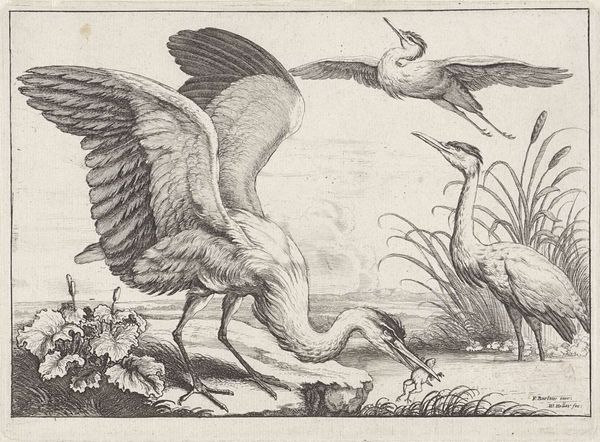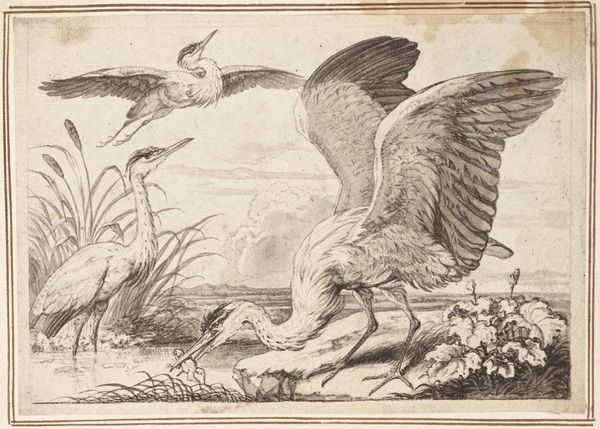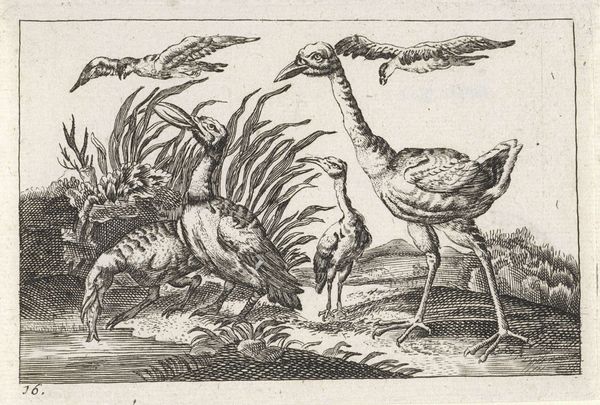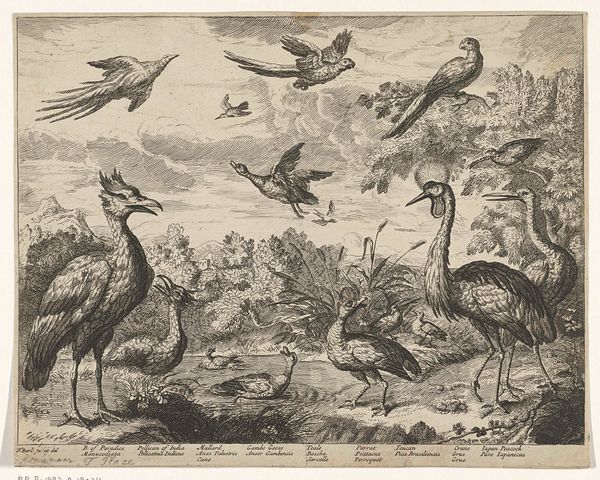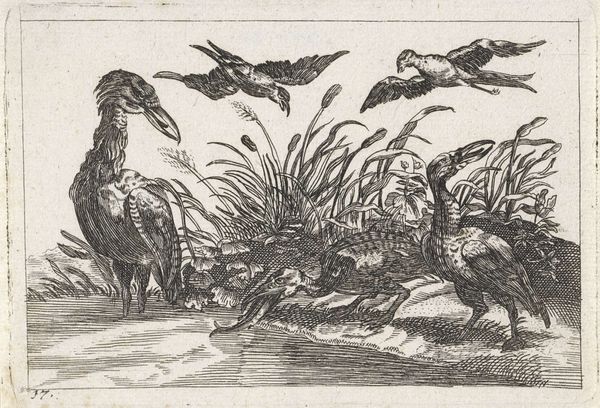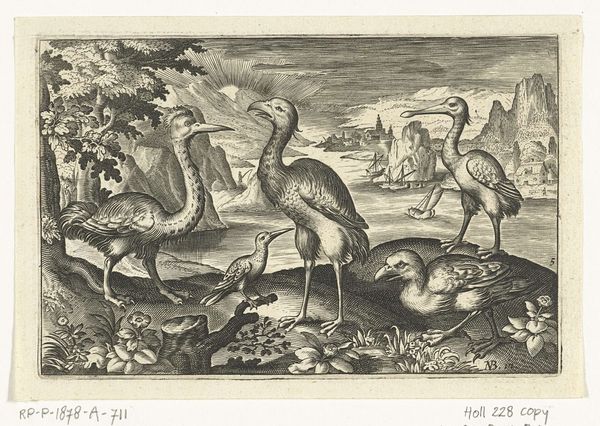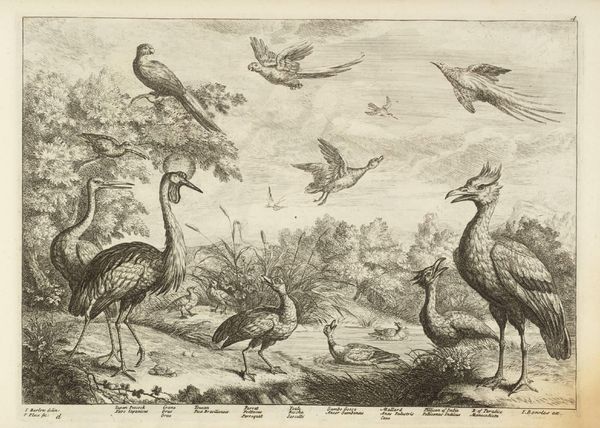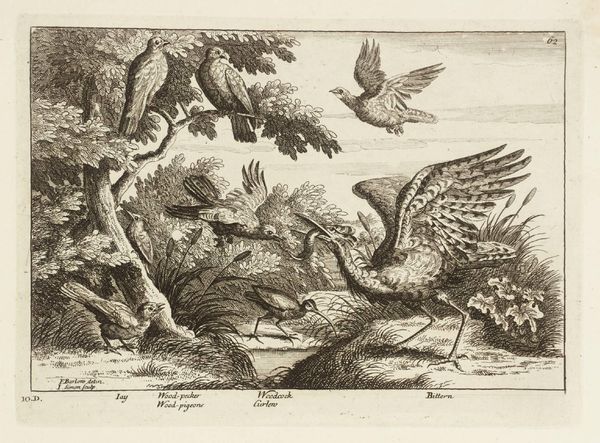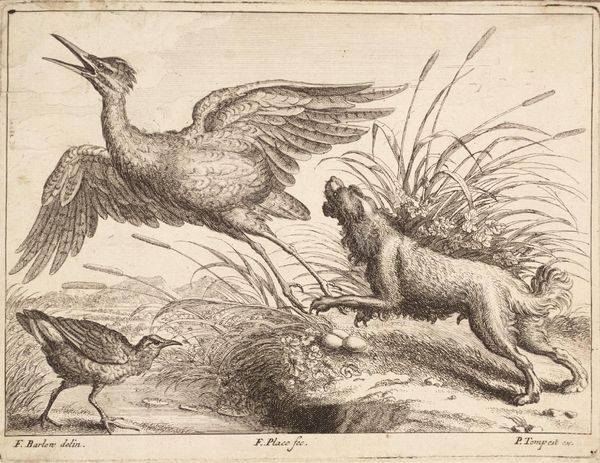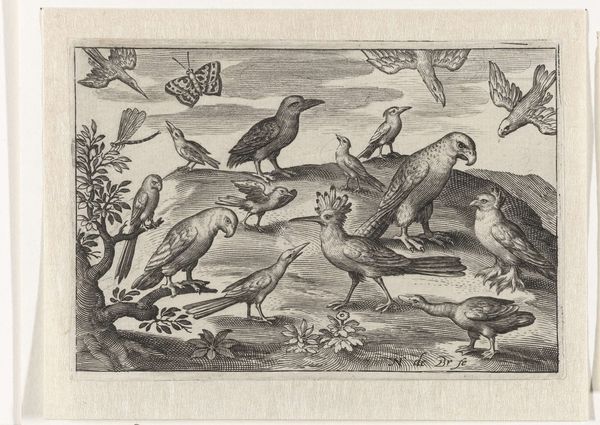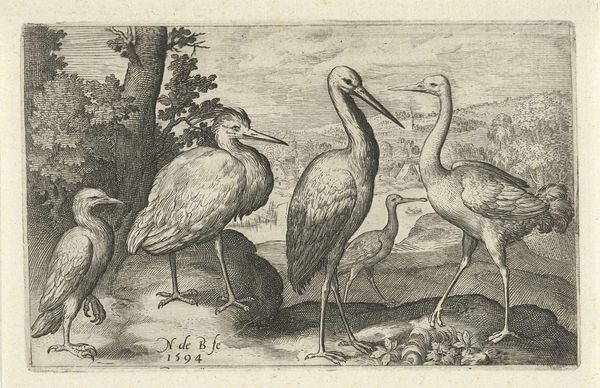
print, etching
#
baroque
#
animal
# print
#
pen sketch
#
etching
#
landscape
Dimensions: height 134 mm, width 198 mm
Copyright: Rijks Museum: Open Domain
Curator: This is an etching called "Drie reigers," or "Three Herons," created sometime between 1654 and 1712 by an anonymous artist. The work is currently held here at the Rijksmuseum. Editor: My immediate impression is that the piece is remarkably alive. The artist captured the essence of movement so vividly with such simple lines, imbuing the scene with a dynamism that transcends the static nature of the print. Curator: Absolutely, and one cannot ignore the history of Dutch landscape art—often serving as reflections of national identity and the human relationship to a changing environment. I find myself considering how these herons, perhaps symbols of resilience and adaptation, interact within the sociopolitical realities of that era, particularly regarding land reclamation and resource management. Editor: Indeed, however, for me, the stark composition commands the gaze; it is structured around the play of positive and negative space, highlighting the forms of the herons through the deliberate emptiness that surrounds them. I notice the intricate details of the feathering, meticulously rendered through etching. Curator: Right. There’s this prevailing idea within Baroque art where animals could mirror aspects of human nature. Are these herons merely subjects observed, or are they allegorical representations speaking to specific values or societal issues during the Dutch Golden Age, such as, maybe, a rising mercantile class shown by industrious creatures claiming resources, while flying free from past constraints. Editor: The linearity employed lends itself beautifully to a semiotic interpretation. The lines define the contours, express movement, and ultimately create a symbol—or set of symbols—readable across the bounds of pure representation. The way they intersect directs how we decipher each element's narrative value. Curator: This piece certainly serves as a reminder of how deeply historical and social frameworks affect how art operates as a mode of cultural representation. It really gives a glimpse into our entangled past, suggesting ongoing environmental considerations are connected. Editor: Yes, even beyond all these interpretations, in studying only the composition, tone and details, we realize how beautifully arranged its shapes are: this composition stays with you after the context fades.
Comments
No comments
Be the first to comment and join the conversation on the ultimate creative platform.
